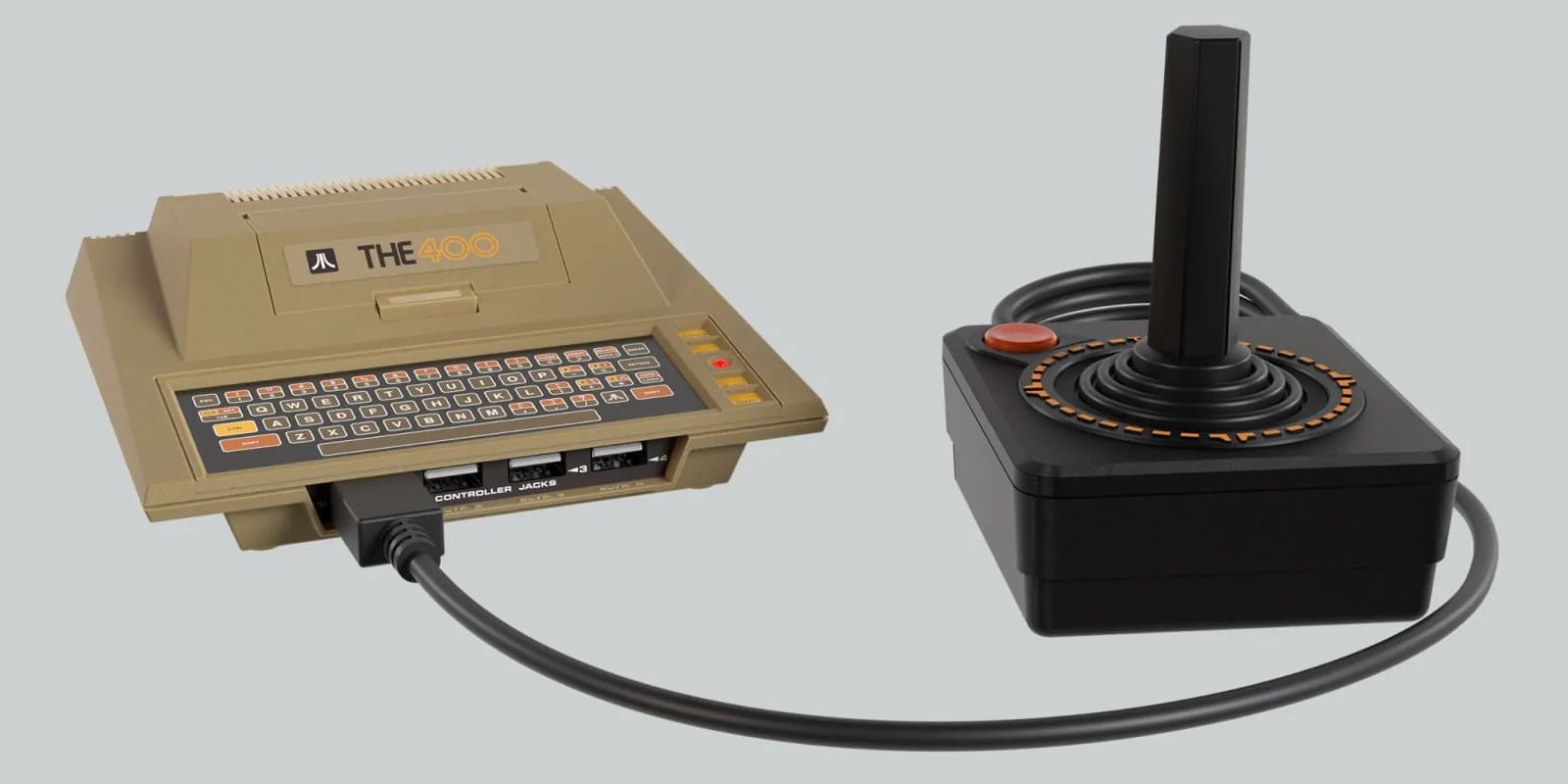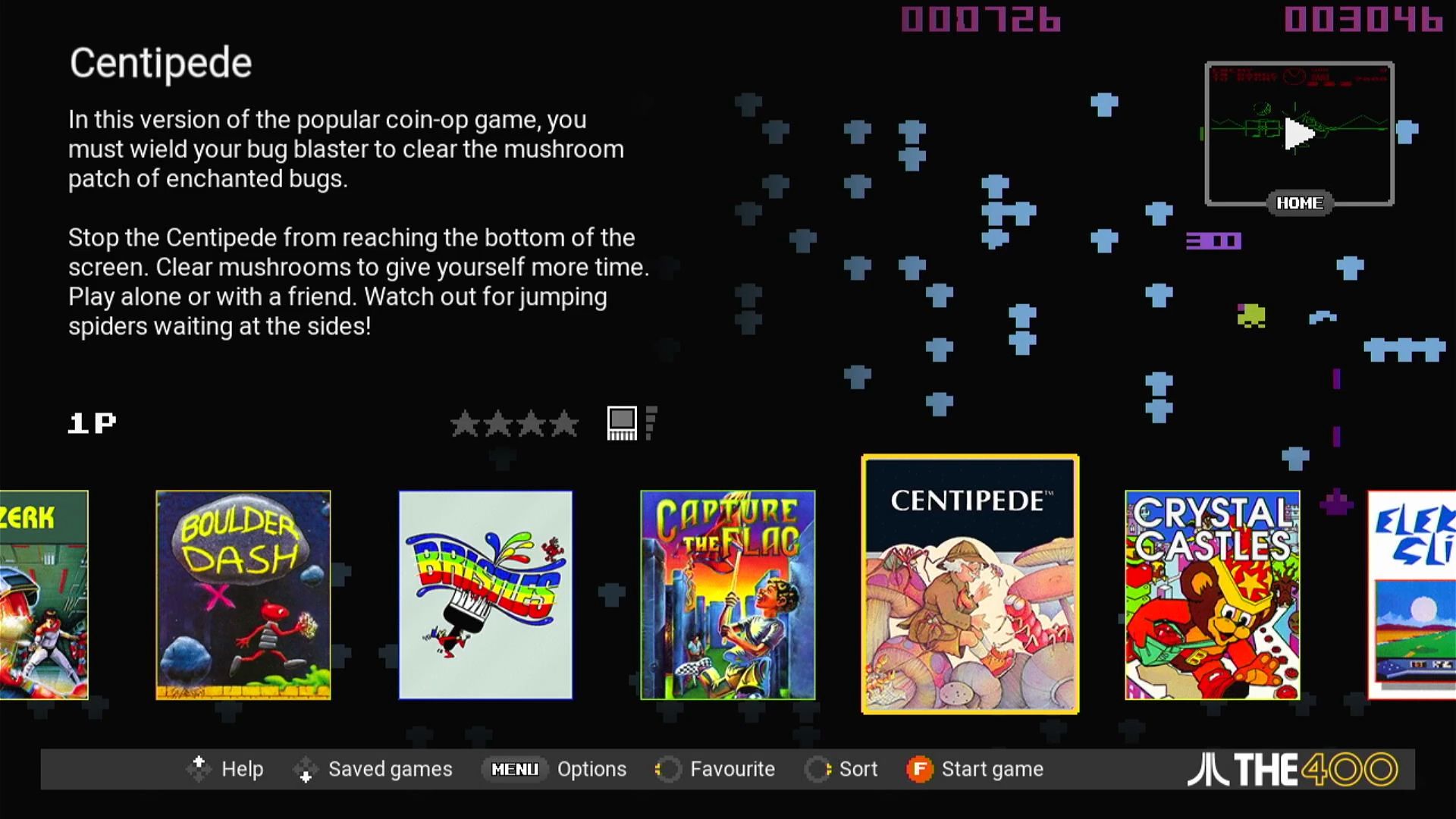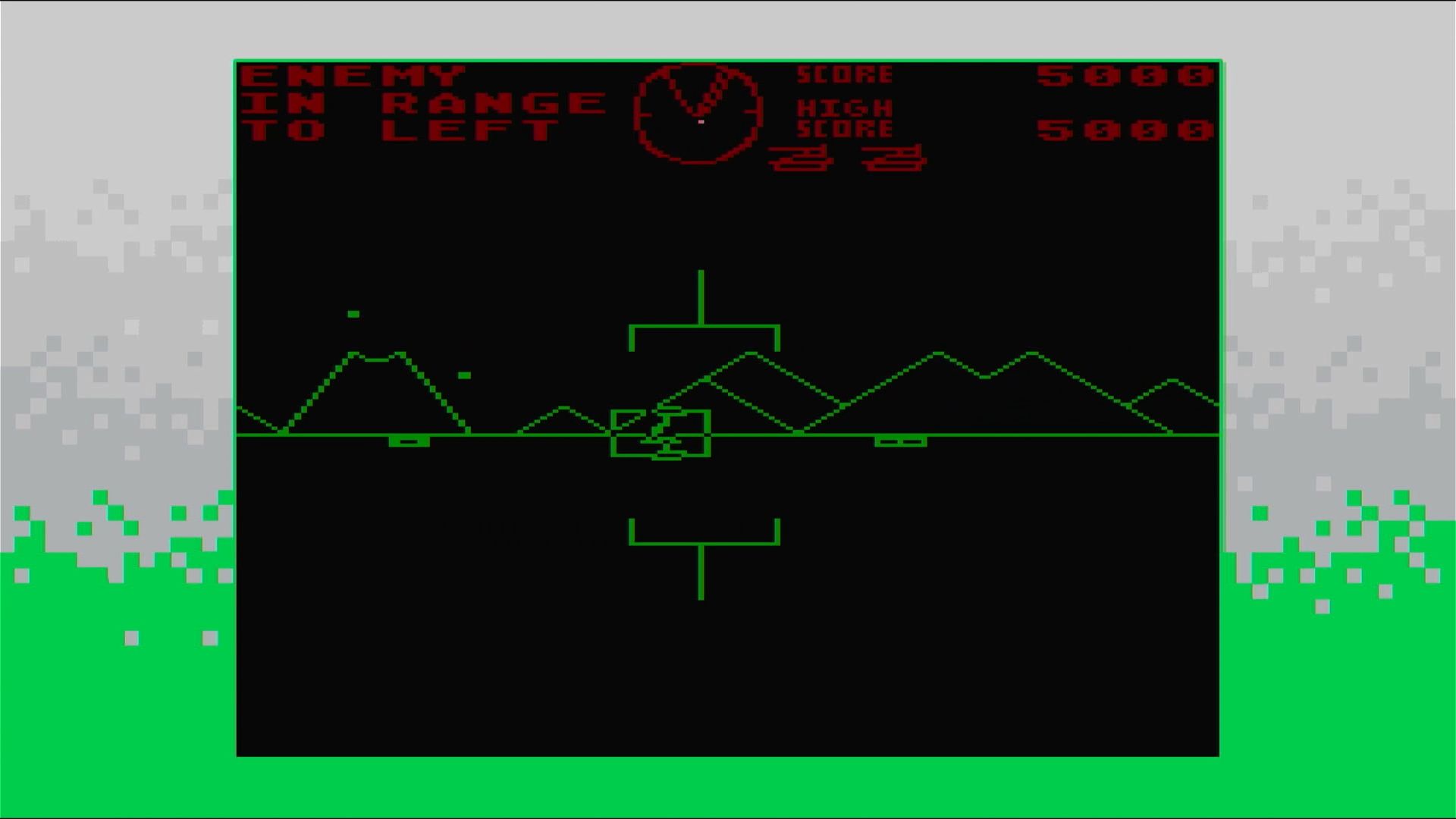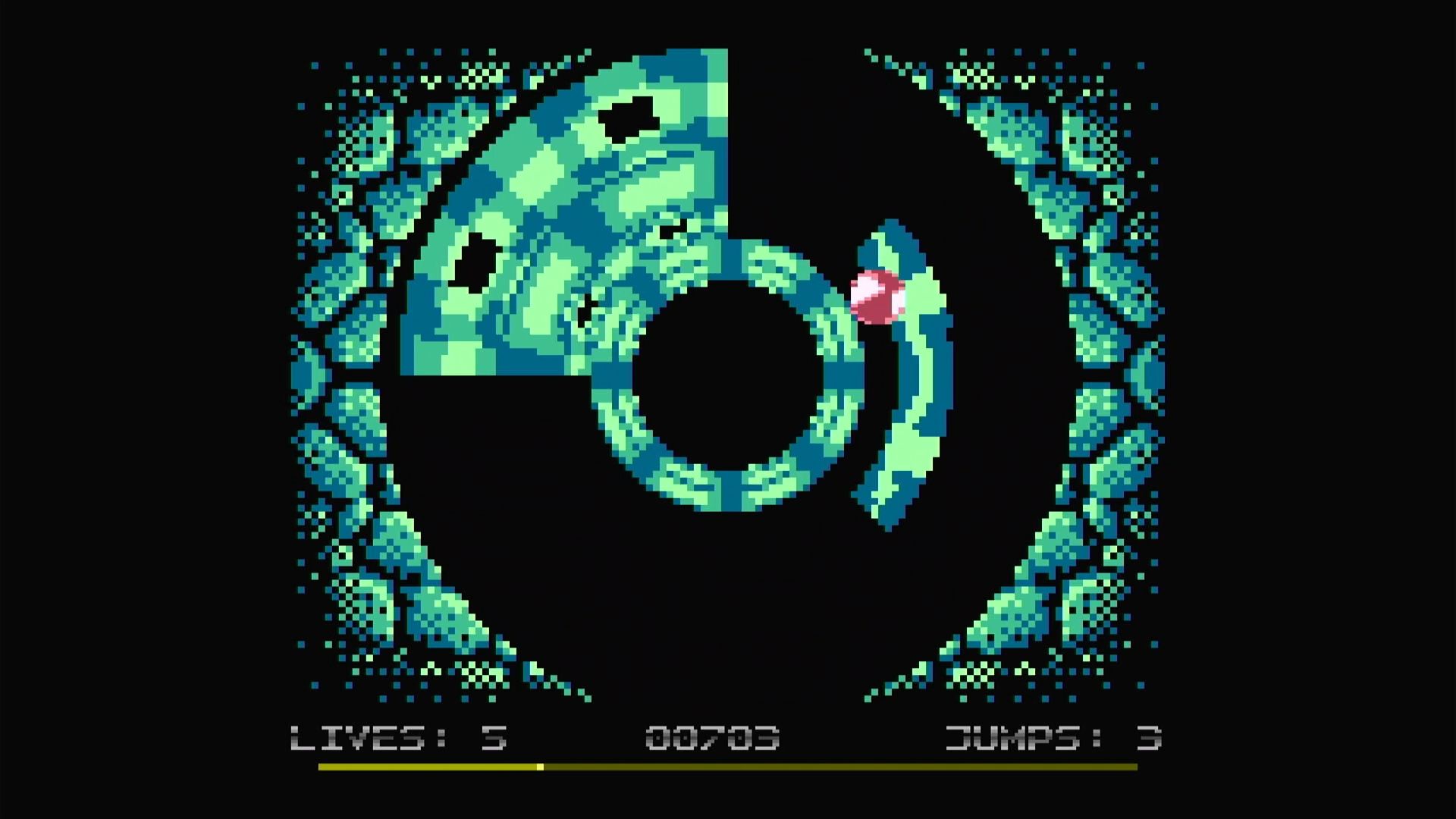Quick Links
Summary
- Straightforward UI & save features make Atari 400 Mini generally user-friendly.
- A library of 25 games offers a decent selection of classic hits.
- The Atari 400 Mini has niche appeal, but it should satisfy fans.
From the perspective of modern computing, the Atari 400 seems like an awkward if charming object, boasting a difficult pressure-based keyboard and an unusual form factor with a central bulge for a cartridge slot. That cartridge slot, however, is the calling card of a machine that bridged home computing and gaming in a more intuitive way than its contemporaries could manage. Almost 45 years later, the Atari 400 Mini brings its namesake back to life in the now-familiar form of a downsized classic console, and it's a cleanly realized effort that could resonate within its niche.
The Atari 400 Mini isn't the first retro console that the company has put out in recent years, but it might be the simplest approach on most levels. Gone are the cartridge slot of the Atari 2600+ and the grand, awkward ambitions of the VCS, jettisoned in favor of a streamlined approach more comparable to Nintendo's throwback models. Notably, however, it's compatible with games across all of Atari's 8-bit systems, which includes the 800 (effectively the same computer), 5200, 130XE, and more.
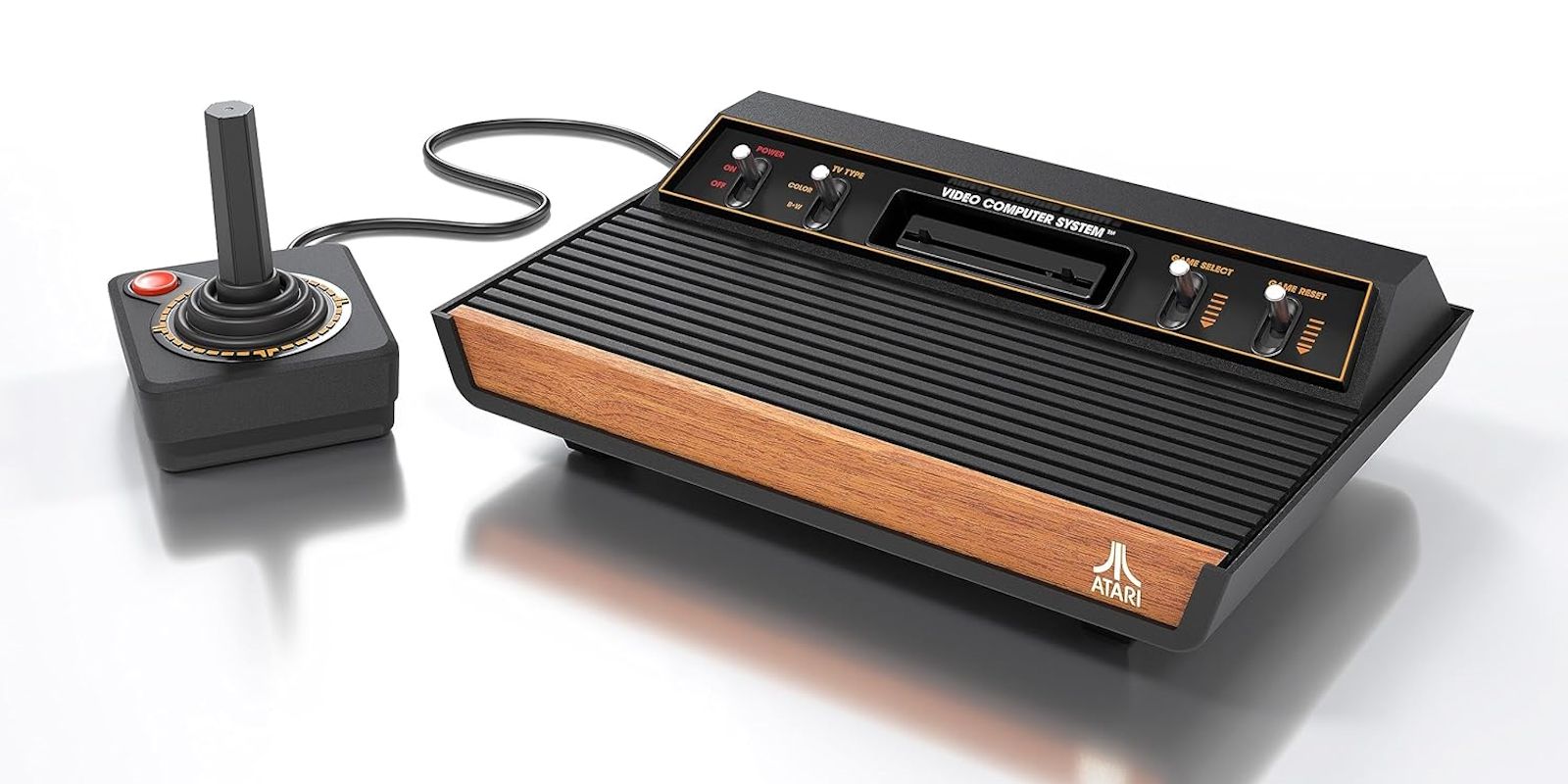
"A Beautifully Crafted Machine"" Atari 2600+ Review
A retro console updated for modern TVs so everyone can once again enjoy the classics from the Atari 2600 and 7800. Can even play original cartridges.The Atari 400 Mini User Experience Is Simple
Straightforward UI And Save Features Get The Job Done
Atari games tend to be straightforward, and the 400 Mini doesn't attempt to get in the way of that. A quick logo sequence on boot-up precedes a side-scrolling menu that features tiles and description for all 25 included games, which can be opened with the press of a button and suspended just as easily. Everything is snappy and responsive, and a small array of useful settings (like an aspect ratio toggle) stay tucked away in a manner that's not intrusive. It's all been done before, but it works.
The biggest difference that comes from playing these titles on the Atari 400 Mini instead of original hardware lies in the addition of save slots, pausing, and rewinding. While the grinding difficulty of simple games once helped to mimic the arcade experience and provide more value in length, it's not as appealing to every potential player today. Each included title features four save slots, with filled files distinguished by a thumbnail of gameplay and a record of playtime.
A Solid Selection From A Dated Library
The Library Is Fun But Imperfect
In most respects, the Atari 400 Mini's library is a respectable array, although it isn't without its shortcomings. The most obvious is the absence of the original Star Raiders, widely considered the system's killer app thanks to its staggering graphical achievement at the time of its release. Here, it's replaced by Star Raiders II, probably thanks to the sequel's step away from relying on the keyboard. There's also a case to be made that the selection is too reliant on games that feature mazes in some form or another, but that's representative enough of the original library to be reasonable.
Some obvious highlights of the Atari 400 Mini library are Asteroids, Centipede, M.U.L.E., and Miner 2049er along with the surprisingly complex The Seven Cities of Gold. Battlezone is another notable inclusion, with a legacy as one of the first FPS games and an inspiration for id Software. Likely less familiar is Yoomp!, a 2007 indie game for the platform that previously snuck into Atari 50: The Anniversary Celebration. Yoomp! stands out as an immediately engaging experience that pulls impressive results out of the system limitations, so the anachronism is definitely worth it.
The Atari 400 Mini is intended for a niche audience rather than mass appeal, and that audience is likely to be happy with the product.
If anything missing from the line-up is a personal essential, it's not yet game over for the Atari 400 Mini. Any Atari 8-bit title (at least in theory) can be loaded onto a USB drive to play on the console, obviously with the disclaimer that the game should be obtained legally. A test of .ATR files for Dropzone and Joust ran into no problems, although it's worth noting that all games played this way will have to share four save slots in total.
Well-Built & Well-Designed
The Atari 400 Mini Is A Great Physical Product
The physical nature of the Atari 400 Mini is obviously a major selling point for the system, as anyone without a collector's mindset is likely to play these games through other means now. Like the software, it's hard to find much to complain about in this regard. The console is well-built and detailed, and the included CXStick is an accurate recreation of all the good and the bad that comes with the iconic CX40 joystick, along with a few extra buttons for system functions.
One charming note is that the HDMI and USB-C cables that come packaged with the console feature a matching beige coloration, an unusual blend of 20th century electronic style and 21st century formats that stands out in a sea of black cables. The only thing that's missing in the package is a wall adapter, although it's possible to power the Atari 400 Mini by plugging the USB into the TV itself. A six-foot cable for the CXStick is more generous than the CX40's original offering, although the convenience of a setup could still be highly dependent on the room.
The Atari 400 Mini Fills Its Niche Well
A Strong System Without Wide Appeal
There's not all that much to nitpick about the Atari 400 Mini, which is a generally seamless experience aside from figuring out which buttons are supposed to correspond to which functions in games. Whether it's worth buying for the $119.99 asking price, however, can still be a difficult question. Some games remain genuinely impressive or simply fun, but it's hard to argue that others haven't been largely outmoded, and the Atari 8-bit systems don't cast a nostalgia net as wide as the 2600 does.
Ultimately, the Atari 400 Mini is intended for a niche audience rather than mass appeal, and that audience is likely to be happy with the product. It's well-made, mostly easy to use, and the official support for sideloading gives it more longevity than the included library can generate on its own. The Atari 400 Mini may not be the right fit for most shelves, but anyone who can't let go of fond Atari 8-bit memories can feel comfortable about what the classic console brings to the table.
Screen Rant was sent an Atari 400 Mini for the purpose of this review.

